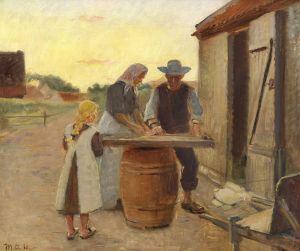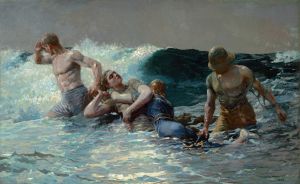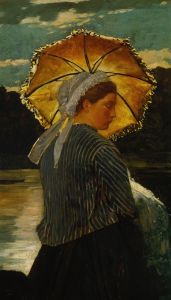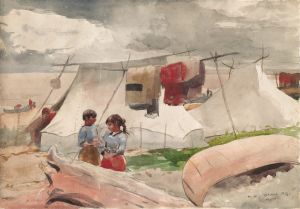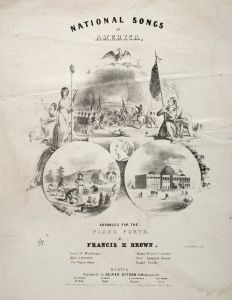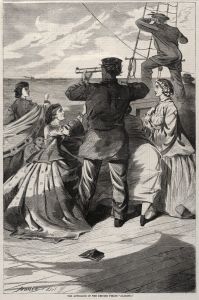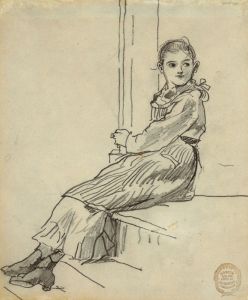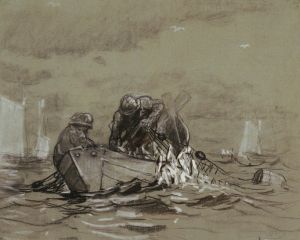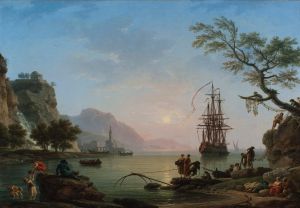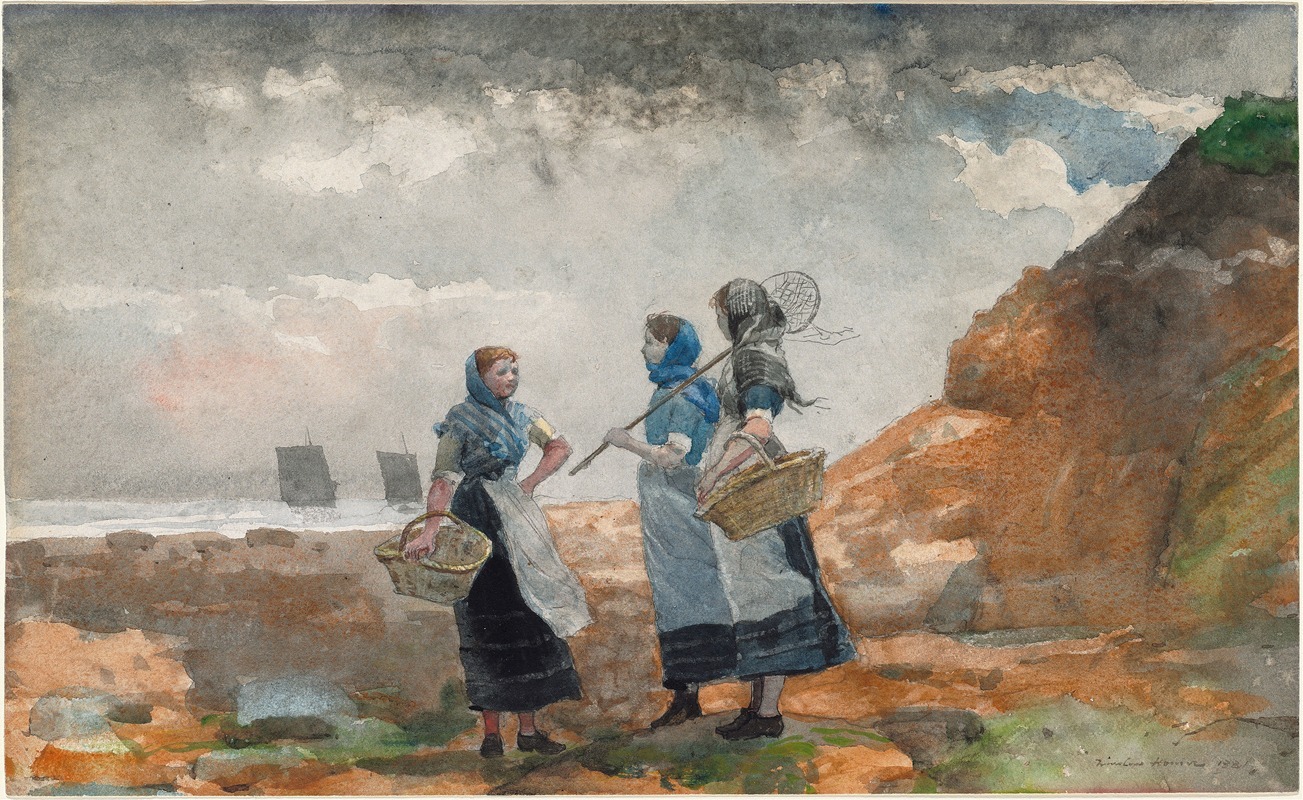
Three Fisher Girls, Tynemouth
A hand-painted replica of Winslow Homer’s masterpiece Three Fisher Girls, Tynemouth, meticulously crafted by professional artists to capture the true essence of the original. Each piece is created with museum-quality canvas and rare mineral pigments, carefully painted by experienced artists with delicate brushstrokes and rich, layered colors to perfectly recreate the texture of the original artwork. Unlike machine-printed reproductions, this hand-painted version brings the painting to life, infused with the artist’s emotions and skill in every stroke. Whether for personal collection or home decoration, it instantly elevates the artistic atmosphere of any space.
Winslow Homer’s painting Three Fisher Girls, Tynemouth is a watercolor created in 1881 during the artist's stay in the coastal village of Cullercoats, near Tynemouth, in northeastern England. Homer, an American artist renowned for his depictions of maritime life and the natural world, spent approximately 18 months in the area, producing a series of works that reflect his interest in the lives of fishermen and their families.
The painting portrays three young women, dressed in traditional working attire, standing on the shore. Their clothing, consisting of long skirts, aprons, and shawls, is typical of the fisherfolk in the region during the late 19th century. The figures are depicted with a sense of dignity and strength, characteristics that Homer often emphasized in his portrayals of working-class individuals. The composition highlights the women’s connection to their environment, with the sea and sky forming a muted, atmospheric backdrop.
Homer’s time in Cullercoats marked a significant period in his artistic development. He shifted his focus toward more intimate and human-centered subjects, often emphasizing the resilience and fortitude of his subjects. The Cullercoats works, including Three Fisher Girls, Tynemouth, are noted for their subdued color palette and careful attention to light and atmosphere, reflecting the influence of European art and the coastal environment on his style.
This painting is part of Homer’s broader exploration of themes related to the sea and the people who depend on it for their livelihood. The fisherwomen he depicted were central figures in the community, responsible for tasks such as baiting lines, mending nets, and carrying fish to market. By focusing on these women, Homer provided a glimpse into the daily lives of the working class in a specific historical and geographical context.
Three Fisher Girls, Tynemouth is now recognized as an important example of Homer’s work during his time in England. It demonstrates his ability to combine realism with a sense of poetic atmosphere, capturing both the physical and emotional landscapes of his subjects. The painting is held in a private collection and is occasionally exhibited in galleries or museums, allowing the public to appreciate its historical and artistic significance.







